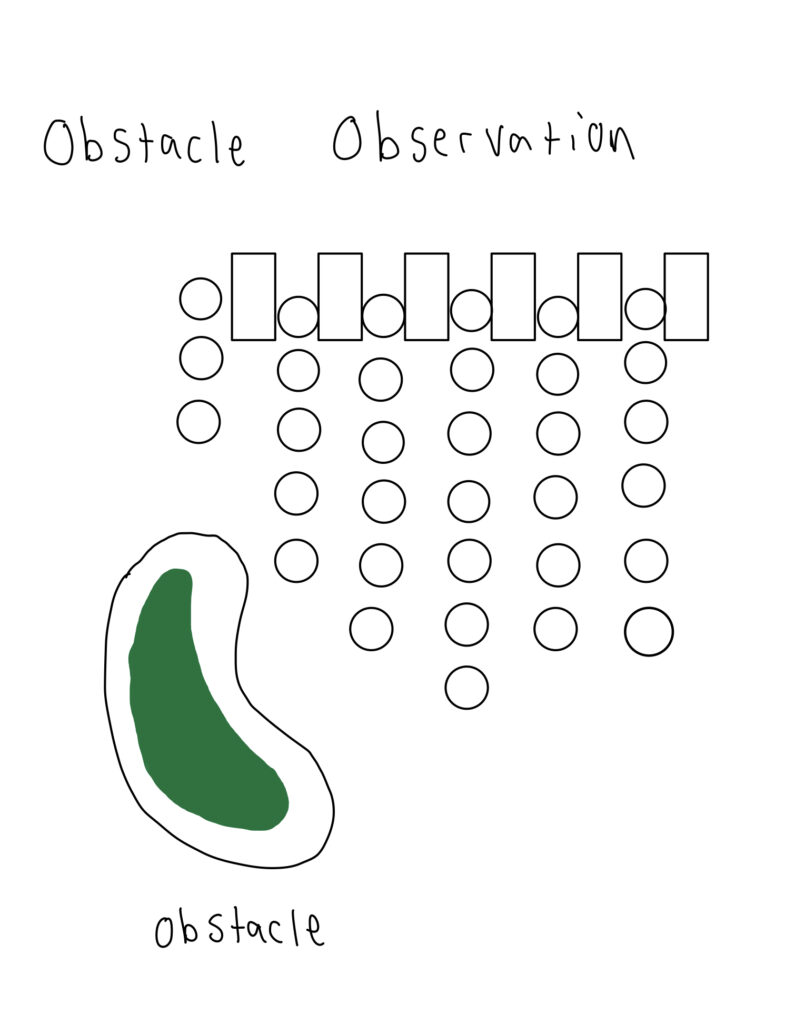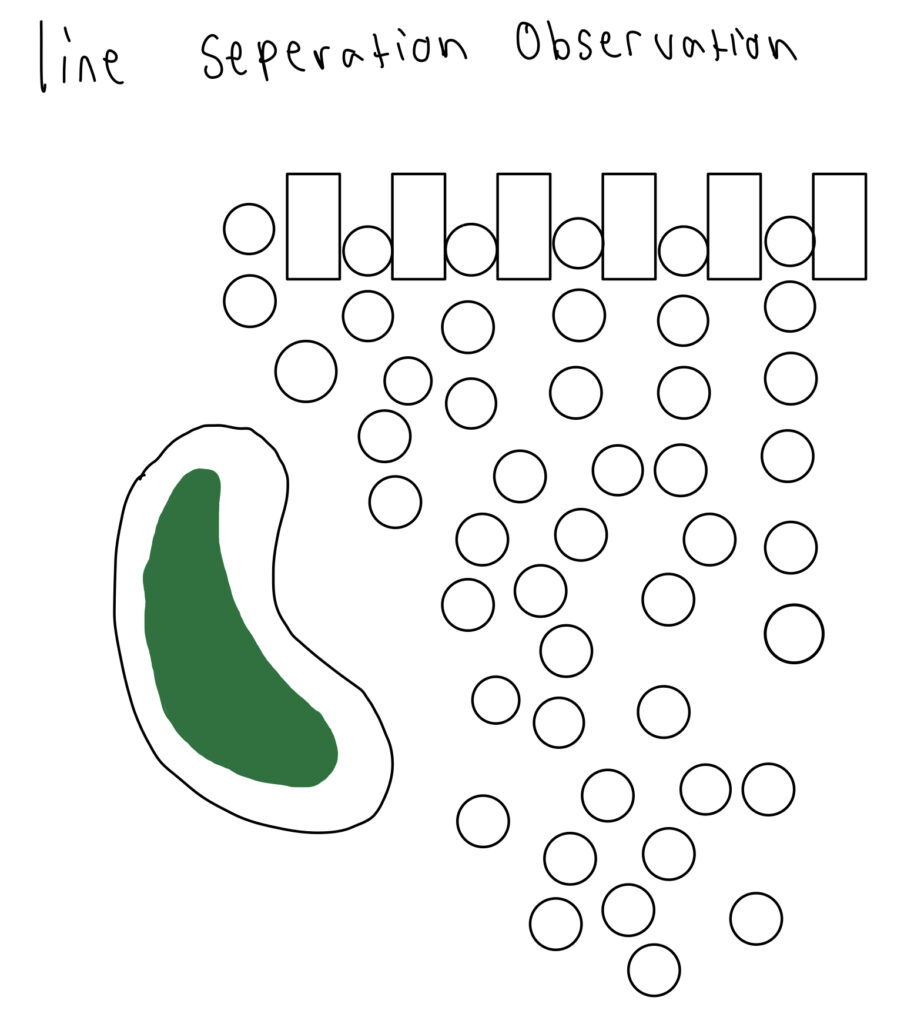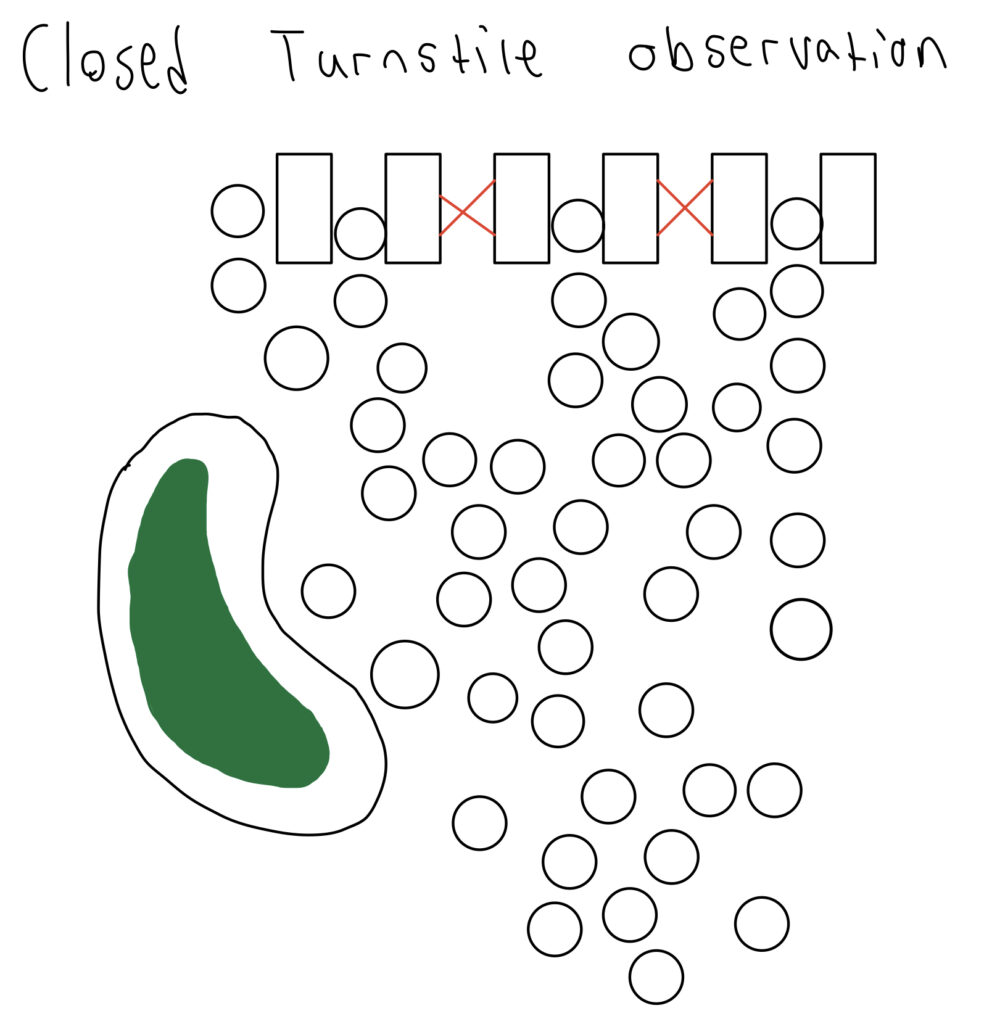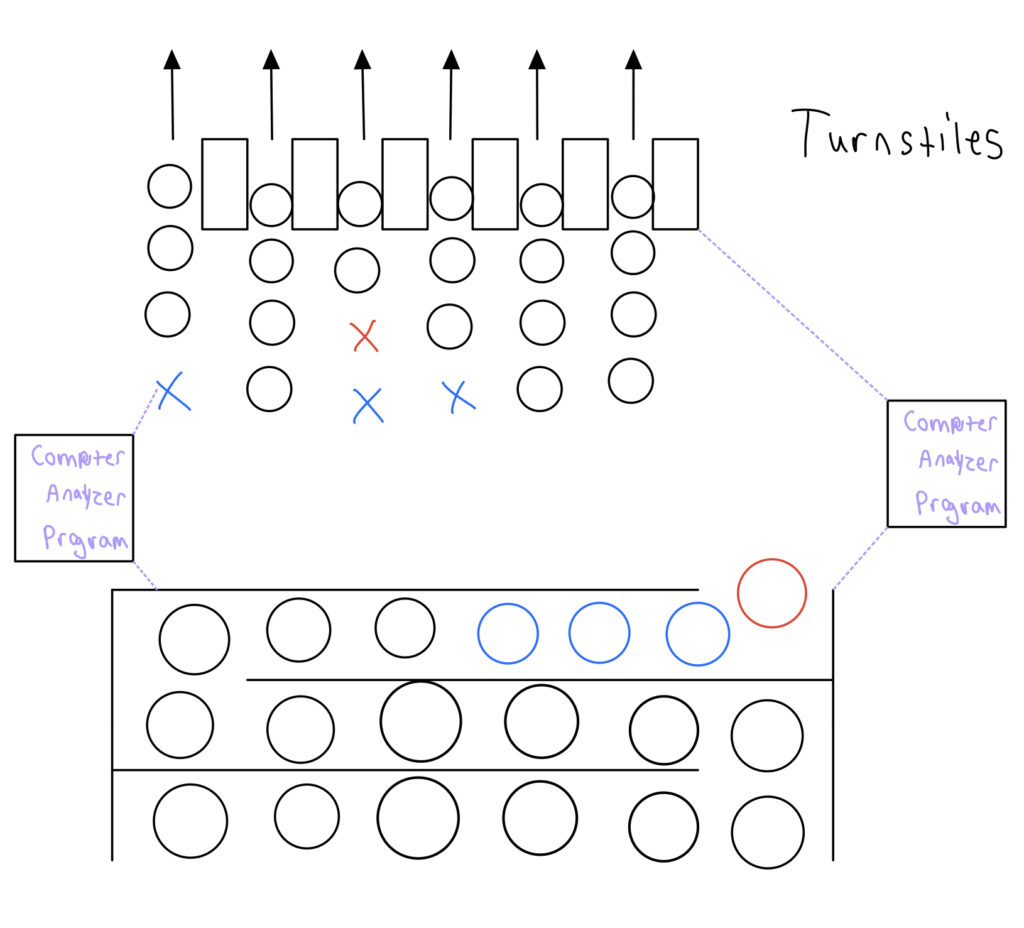Pressure Project 1 (Theme Park Admission Queuing) – Alec Reynolds
Posted: January 27, 2022 Filed under: Uncategorized Leave a comment »
During my visit to Universal Orlando Resort Island’s of Adventure, I noticed an interesting dynamic of social congestion before I even entered the park. To gain admission to the park, one must pass through turnstiles at the front of the park with a valid form of admission. Before the park opens for the operating day, eager guests, ready to get a jump on their day, pile in by the hundreds. This leads to a huge back up of guests and an inefficient admission throughput. Before we dive in to a solution to this problem, let’s contextualize the situation with some of my observations.
OBSERVATIONS:
-Looking at the nature of the congestion I noticed that it was homogenous and the majority of people moved towards the gates. A majority of the congestion contained groups, versus individuals.
-There were many obstacles that the crowd had to navigate around, including floral planters, ticket kiosks, poles and shade structures, ticket sale booths, trees and other common objects like waste recepticals.
-All the lines moved at a unique pace.
-Groups were often spotted abandoning their spot in line to opt in for a seemingly faster one.
-Some turnstile lines appeared to have less guests in them if they were partially obscured by an object.
-From far away, there was no clear separation of individual lines.

-Closed turnstiles would lead to a bottleneck merge effect close to the open turnstiles, creating an even denser congestion.
Observational Imagery:



Benevolent Solution
My solution to this problem revolves around a machine program that can identify the current state of a line regarding its length and identify guests waiting in a single queue and assign them a turnstile row to go to. There would be a physical queue that all guests would enter together and they would eventually be instructed on which line to join by a human operator who would have a line of communication with the crowd grouping analyzer.
More Specifically, the program would have to give a weight to different groups in order to ensure that its assignments create a near equal wait time for all guests entering the park. There are a lot of discretionary factors that would have to go into this type of screening algorithm that borders the line of data representation and discrimination.

Ultimately, this is a way of giving the perception to guests that their wait time is less than it actually is. By having the crowds moving consistently in a single line (everyone equal) and then assigning them a turnstile line that is an equivalently short wait as everyone else, it should take away that nagging sensation that all too many of us have had before, “Ugh, I picked the wrong line.”